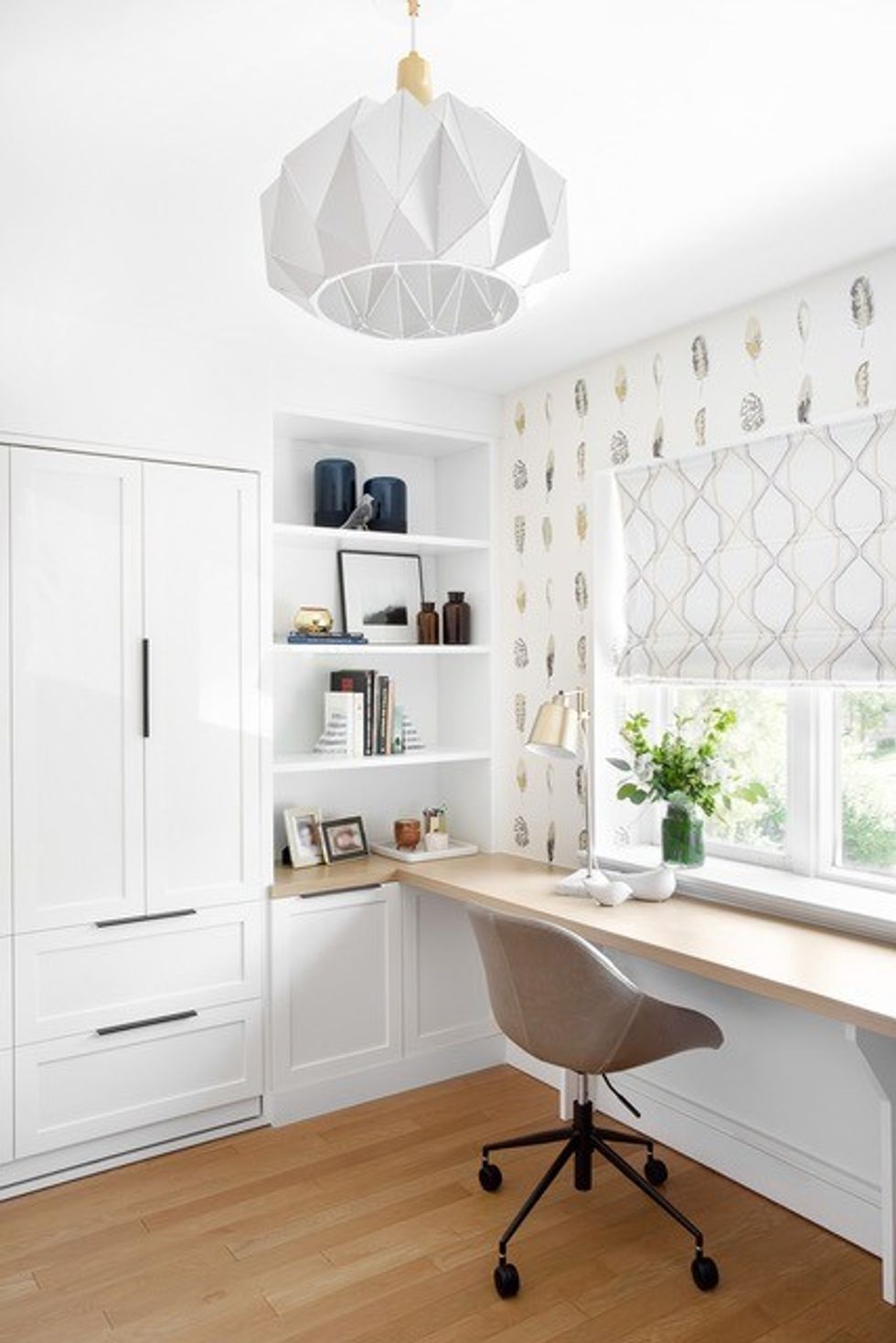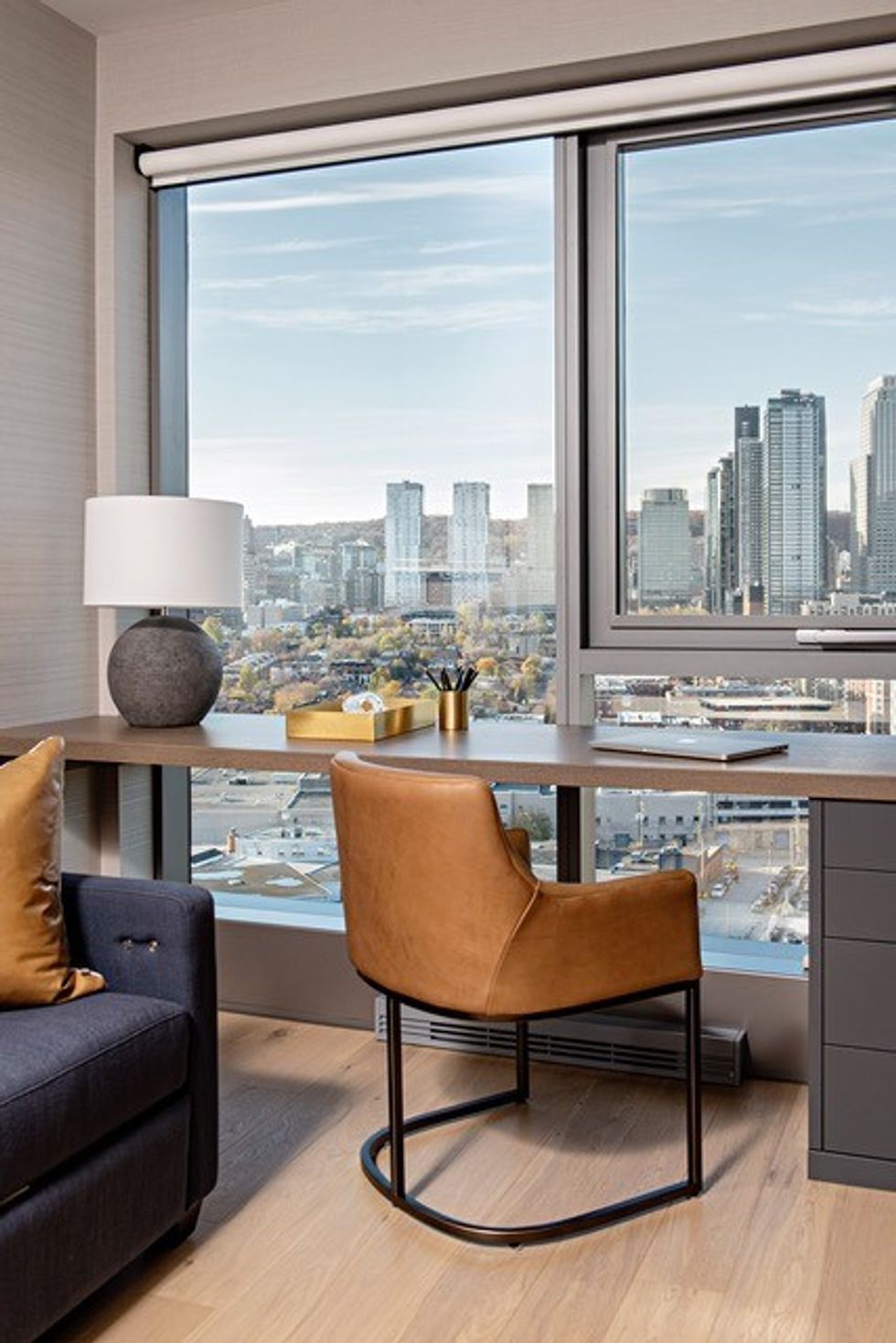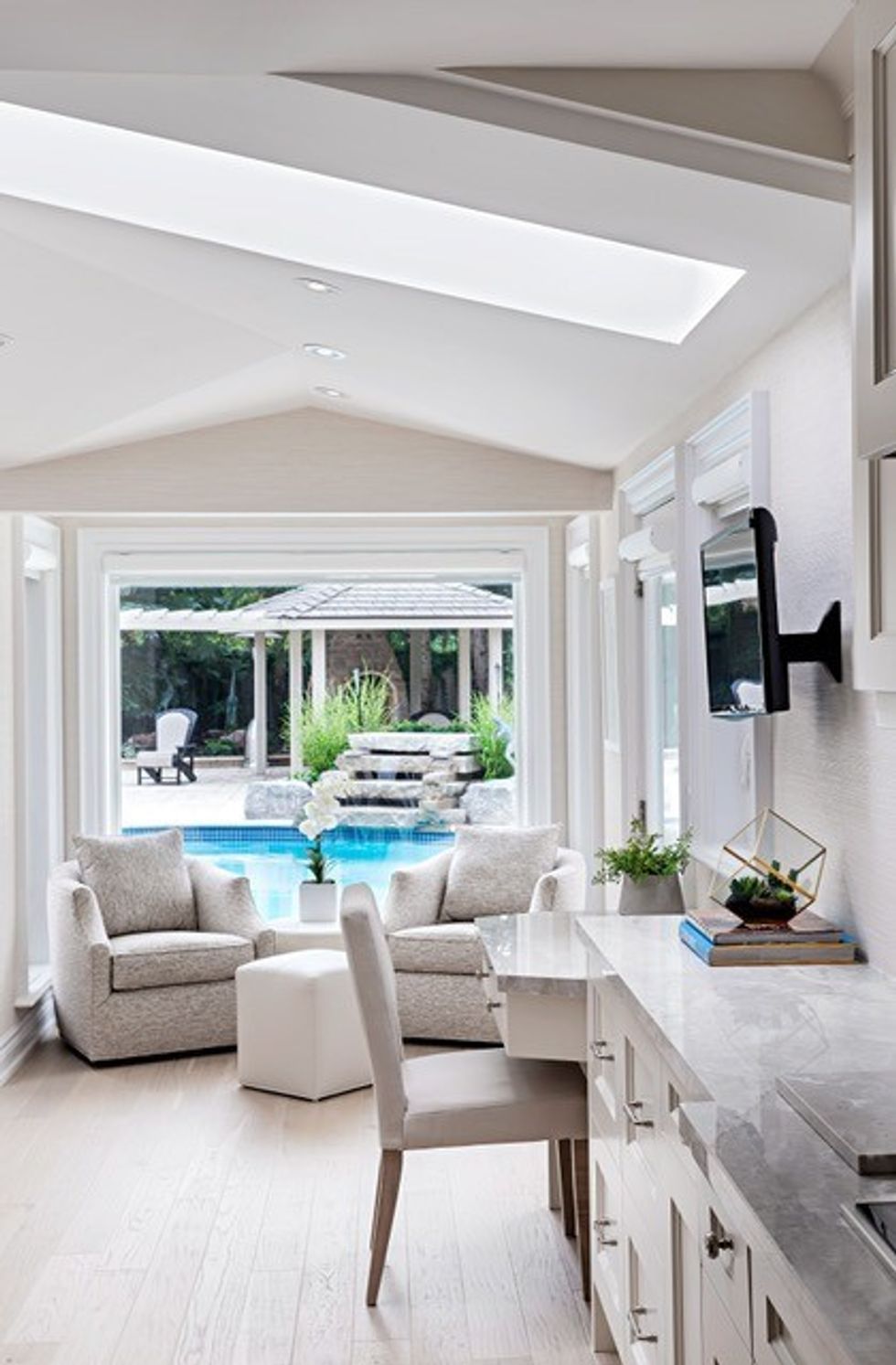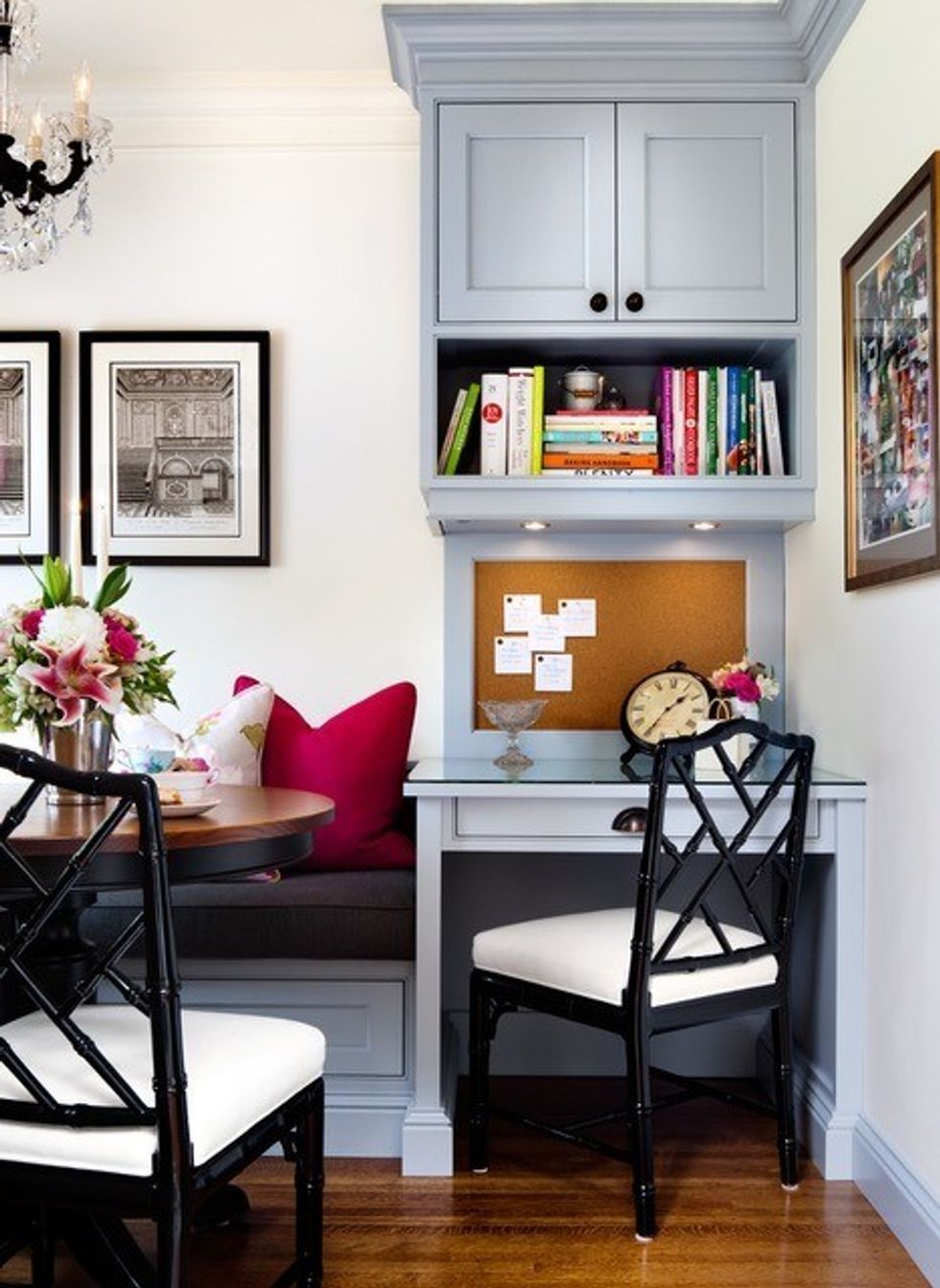Designers are always looking at trends and studying demographics.
As the population ages, individuals and families grow into the next stage of life. Condo dwellers were already moving to the suburbs in order to get more space, boomers were already moving out of the city or procuring a second residence, and 2.1 million Canadians were already working from home. “The pandemic was like throwing gas on a fire,” says designer Jane Lockhart. “It accelerated these trends that were already underway.”
With the pandemic, many more people are now working from a make-shift home office, children are now being schooled at home, online shopping is more popular than ever, a growing interest in hobbies is taking up more space, and Zoom meetings are now the norm.
READ: Toronto Storeys’ Design Trend of the Year 2020: The Home Office
In March of 2020, Stats Canada reported that -- combined with those who usually work from home -- approximately 40% of workers (6.8 million) were now working from home, compared to 6.7 million who were not.
Rethink and Then Repurpose

All of a sudden everyone in the household needed a work surface and access to the internet at the same time. Every nook and cranny was being assessed as a possibility. “Right off the bat the guest room was repurposed as office space,” says Lockhart. “Without visitors, we can safely take over any room that doesn’t have at least two functions.”

People are adding custom-made surfaces in front of windows to take advantage of unused space. Bright light in front of, or behind, a monitor isn’t ideal, as our eyes continually adjust. However, many rules are now being thrown out the window, so if you have the chance to also face a window, make sure that your screen is at eye level, so that you have to look up, and over, to take a peek outside.
READ: Home Office Expense Claims Up to $400 to Be Permitted This Tax Season
The kitchen is now the ‘uber hub’ of the home, with islands, dining tables, and even closets, being adapted into work and school stations.

Closets are one of the best workspace alternatives when trying to find more room. They offer prime indoor real estate, whether it’s a small fitted closet, a storage alcove under the stairs or a designated walk-in closet/dressing room. With doors that close, you can hide your work-in-progress and, literally, shut the door. Psychologically, it’s important to define family time when working from home, and something as simple as visually shuttering a work space can signify the end of a workday. In addition, you don’t have to clean off the kitchen table when it’s time for a meal. These tedious, daily readjustments make for an unbalanced live/work culture.
Zoomin’ Into the Future
Remember acoustic tiles? Manufacturers are now developing acoustical panels for the home in complementary colours. Sound absorption is one of the leading concerns in our multi-purpose houses. Rooms with tiled floors and walls enhance noise (as in the kitchen), but carpets, heavy draperies and upholstered furniture can help to deaden the sound.

Closets are also acoustically beneficial if you’re surrounded by hanging garments, and they provide a great hideaway when hosting an online meeting. “We’re adding walls and sound-proof panels everywhere,” says Lockhart. “And Zoom rooms are now a thing.”
What's Next

Working from home is the new norm for a high percentage of the population. Dedicated spaces, that include a suitable work surface, drawers and shelves, will evolve as the long-term need dictates. Take the time to address your specific requirements, and have a space designed just for you, because we’re in this for the long haul.


















